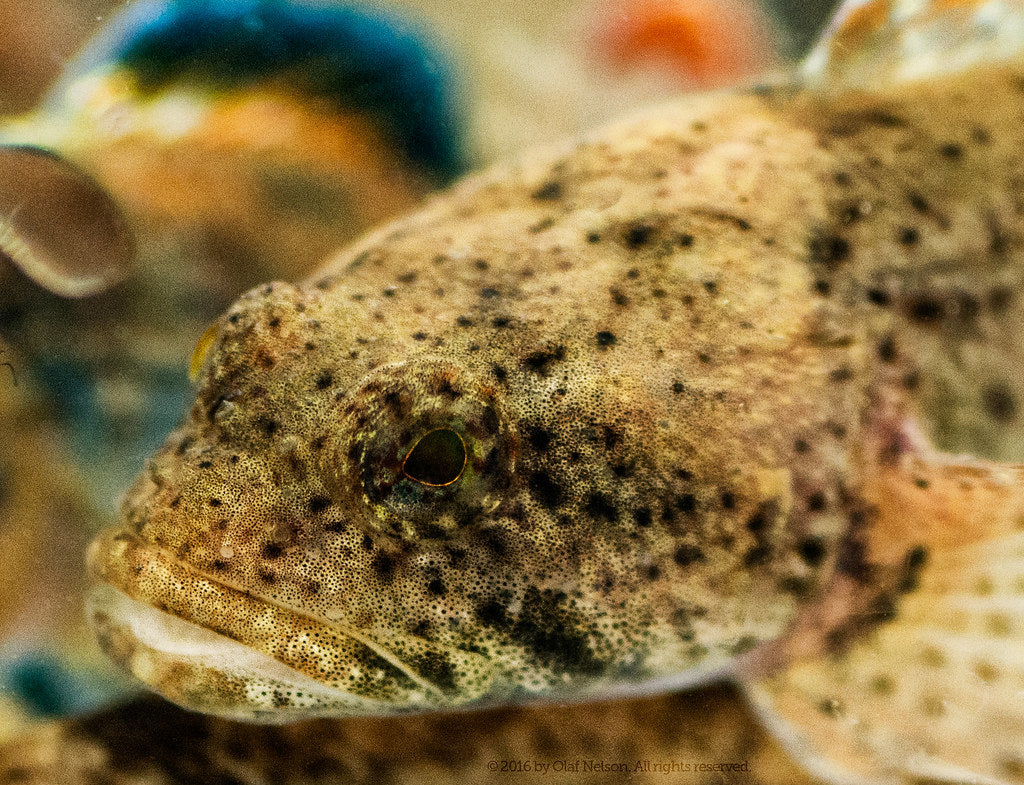
Protecting Native Fish Species from Misinformation.
Share
How to Identify Sculpin from Invasive Goby – Protecting Native Fish Populations
Native freshwater sculpin species are essential members of many cold-water stream ecosystems in the United States, serving as indicators of water quality and providing critical support to food webs. However, the arrival of invasive gobies, particularly the round goby (Neogobius melanostomus), has complicated the task of managing and protecting these ecosystems. One significant problem that has arisen is the misidentification of native sculpins as invasive gobies, leading to unintended harm to sculpin populations.
In this blog post, we’ll walk through how to tell the difference between sculpins and gobies, and discuss why protecting sculpins from misidentification is so important for preserving freshwater ecosystems.
Sculpin vs. Goby: Key Identification Tips
At first glance, sculpins and gobies may appear similar. Both are small, bottom-dwelling fish with similar body shapes and behavior. However, there are some distinct features that can help you tell them apart.
1. Body Shape & Size
-
Sculpin: Sculpins generally have a more robust, somewhat flattened body with a larger, broader head. They have a tapering body that makes them look stockier and are typically 2 to 5 inches long, although some species can grow larger.
-
Round Goby: Gobies have a slimmer, more cylindrical body shape, and their heads are slightly more pointed compared to sculpins. They can grow up to 10 inches, but most round gobies are around 4 to 6 inches in length.
Visual Guide:
Image of a Round Goby (left) Image of a Sculpin (right)

2. Fins
-
Sculpin: One of the most distinctive features of sculpins is their separate pelvic fins. They also have large, fan-like pectoral fins that help them stay close to the streambed. Sculpins’ dorsal fins are often spiny in the front portion and soft in the back.
-
Round Goby: In contrast, round gobies have fused pelvic fins that form a suction-cup-like disc on their underside. This allows them to cling to rocks in fast-flowing waters. Their dorsal fin often has a distinctive black spot near the rear.
Visual Guide:

3. Color Patterns
-
Sculpin: Sculpins usually have mottled brown, tan, or gray coloration, which helps them blend into rocky streambeds. The patterns are irregular, often with spots and blotches.
-
Round Goby: Round gobies tend to be darker, with more uniform brown, black, or olive coloring, though they sometimes have mottled patterns. Juvenile gobies can have more pronounced striping or blotching.
Visual Guide:
Image showing the mottled camouflage of a Sculpin

Image showing the darker coloration of a Round Goby

4. Behavior
-
Sculpin: Sculpins are generally more reclusive and prefer to remain hidden among rocks or substrate. They move with short bursts and tend to stay close to the bottom, feeding on small invertebrates.
-
Round Goby: Gobies are aggressive and territorial, often outcompeting native fish for food and space. They are more likely to be seen darting around and displaying dominance over their environment.
Why Misidentification Matters
Misidentification of sculpins as invasive gobies can have severe consequences for sculpin populations and the overall health of freshwater ecosystems. Here's how misinformation negatively impacts sculpins:
-
Unnecessary Culling of Native Sculpins
Many anglers and conservationists, in their efforts to protect native ecosystems from invasive species, may mistakenly kill sculpins, thinking they are round gobies. This not only harms sculpin populations but also disrupts the ecological balance in streams where sculpins play a vital role. -
Ecosystem Imbalance
Sculpins are a key part of the food web. They serve as prey for larger fish, including trout, and their presence indicates healthy water quality. By reducing sculpin populations through misidentification, we risk throwing these ecosystems out of balance, leading to declines in other species that rely on them. -
Increased Pressure on Native Fish
If sculpins are removed from an ecosystem unnecessarily, invasive species like gobies can gain an even stronger foothold. This puts more pressure on native fish species, as gobies are already highly competitive and can take over the habitat and food resources.
What You Can Do to Help
-
Learn to Identify Correctly
Make sure you’re familiar with the visual and behavioral differences between sculpins and gobies. The tips and pictures above can help you make the right call in the field. -
Educate Others
Share what you know! If you're an angler or someone who spends time near streams and rivers, make sure your peers also know how to identify sculpins and gobies correctly. -
Report Invasive Species
If you suspect you’ve encountered an invasive round goby, report it to your local fish and wildlife agency. However, always be sure of your identification before taking action, especially if it might involve harming the fish.
Conclusion
Sculpins are a critical part of healthy freshwater ecosystems, and protecting them from harm is essential. While invasive gobies pose a real threat, the misidentification of sculpins as gobies can exacerbate the issue. By learning to identify these species correctly and spreading awareness, we can help protect our native fish populations and ensure the vitality of our streams and rivers for generations to come.
If you are looking to identify a fish yourself I have two places to recommend
• The Facebook group NANFA - North American Native Fishes Association
• The website FishMap Just input your postal code and it will bring up those watersheds. Click a watershed and it will bring up a list of all the fish identified within it. If you click on a fish name it will bring up a map of all known locations in the US. You can click any of the small images below the name and it will bring up extensive information about the species.
